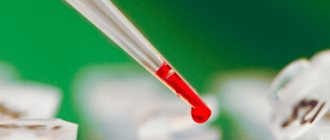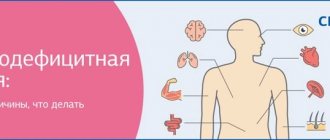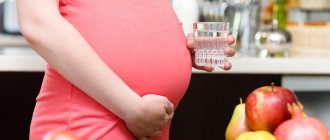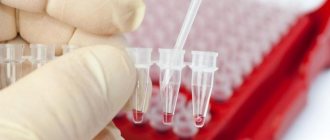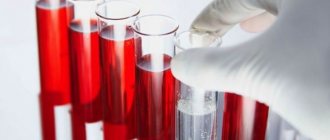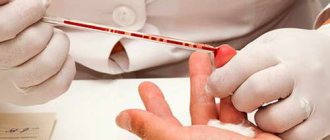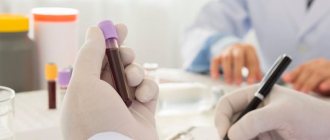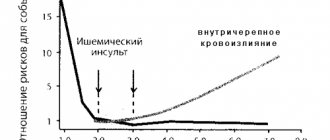Useful articles / August 31, 2020
A single test is not enough to diagnose iron deficiency anemia. It is necessary to evaluate a set of indicators: ferritin, transferrin, serum iron, hemoglobin, total iron-binding capacity. Iron deficiency can be latent, but the level of hemoglobin in a general blood test (CBC) is not a cause for concern. However, iron reserves in the body are often depleted by that time (read more about ferritin in the article “Ferritin analysis: why is it needed?”). What does a serum iron test show?
What is iron?
A serum iron test is often called an iron test - they are the same test. However, it should not be confused with ferritin or hemoglobin. Iron is a trace element that is part of hemoglobin and other respiratory pigments, which ensure the transfer and delivery of oxygen to tissues. Iron is responsible for hematopoiesis and redox reactions of the body, is involved in collagen synthesis, the functioning of the immune system, and porphyrin metabolism. Fe deficiency leads to disruption of hemoglobin synthesis and oxygen transport in the body.
A person receives iron through food and is absorbed in the intestines. And this is where the transport protein ferritin, which transports and stores iron, is important.
Ferritin and serum iron are different tests,” explains Lyubava Kazakova, general practitioner at ELISA Medical Center. — The level of iron in the body can change depending on nutrition, and ferritin shows the reserve of this substance. For example, serum iron may be one thing today and another tomorrow. It changes after eating or taking iron supplements. Ferretin cannot be changed so dramatically. Ferritin can also increase during inflammatory processes in the body. Thus, sometimes there is a false impression that the supply of a substance is normal, but in fact this is a mistake. Therefore, when diagnosing iron deficiency anemia, a set of tests is needed.
A serum iron test is necessary to assess the amount of iron in the body at the time of the test. As we have already said, the main source of microelements is food. Heme iron comes from meat and fish, non-heme iron comes from vegetables and fruits. It is important to understand that only 1-5% of iron is absorbed by the body from plant foods. For animal products, this figure reaches 35%. The process of absorption of the substance is “controlled” by the intestines. Excess microelement is stored in the body as a reserve. But the level of ferrum in serum changes throughout the day, and also depends on age and gender.
Other factors of iron deficiency
Sometimes it happens that iron enters the child’s body in sufficient quantities, but the baby nevertheless develops iron deficiency.
It's possible:
- in case of impaired absorption of nutrients in the gastrointestinal tract due to its diseases;
- lack of vitamin C;
- helminthic and parasitic infestations.
All these factors prevent the child’s body from fully absorbing iron, which becomes the cause of its deficiency.
With iron deficiency, a disease develops - iron deficiency anemia. In this case, it is impossible to compensate for the lack of iron with food and it is necessary to prescribe iron supplements.
Normal blood iron levels
Fe levels in the blood of men and women are different. For physiological reasons, the rate will be lower in women (menstrual cycle and pregnancy), and higher in men. The average value for men is 14.3–25.1 µmol/l, for women – 10.7–21.5 µmol/l.
Regardless of gender, the older a person is, the lower his iron level in the body.
What reduces the level of ferrum in the blood?
- Age. The older the person, the lower the serum iron concentration.
- Menstruation and pregnancy.
- Chronic fatigue and stress.
- Sleep deficiency.
- Physical overexertion.
Age standards of iron for children
- From 0 to 3 months – 4.0 mg per day
- From 4 to 6 months – 7.0 mg per day
- From 7 to 12 months – 10.0 mg per day
The iron content in breast milk is from 0.3 to 0.5 mg per liter. Due to the presence of special proteins in mother's milk, iron from it is supplied to the maximum and absorbed in the baby's body.
Modern infant formula also contains the required amount of iron, taking into account the characteristics of its absorption and the needs of the child in the first and second half of life and make it possible to prevent its deficiency.
Anemia. How to increase iron levels in the blood?
Impaired intake, absorption or loss of iron can lead to iron deficiency anemia. Anemia is not an independent diagnosis, more often it is a consequence of chronic diseases: tumor formations, polyps, intestinal diverticulosis, uterine fibroids, endometriosis, gastric ulcers... Before treatment, it is necessary to find out the cause of iron deficiency.
Causes of iron deficiency anemia:
- Nutritional deficiency (elderly people are more susceptible, their diet contains more dairy and plant products than animal products).
- Diseases (stomach ulcer, duodenal ulcer, various polyps, tumors. With oncology, hemoglobin decreases, which is associated with increased destruction of iron in the body).
- Menorrhagia in women (heavy menstruation).
Symptoms:
- General weakness.
- Increased fatigue.
- Hair loss and brittle nails.
- Cardiopalmus.
- Increased irritability, anxiety.
- Light sleep.
- Problems with memory and concentration.
- Dysphagia (difficulty swallowing dry food).
Therapy should have an integrated approach: changing the diet plus taking synthetic forms of iron. For some diseases, for example, resection of the small intestine, changing the diet cannot solve the problem of iron deficiency. Parenteral administration of drugs is necessary.
How to suspect iron deficiency in a baby
The following symptoms may serve as alarm bells that allow parents to suspect iron deficiency:
- lethargy and weakness;
- increased irritability;
- tearfulness;
- decreased appetite;
- pale skin;
- frequent colds.
In such a situation, it is necessary to take a blood test and contact a pediatrician.
Lack of iron from the first months of a baby’s life affects his mental and physical development, causing serious delays and impairments.
What increases iron levels in the blood?
- Products containing iron.
- Taking iron supplements.
There is a category of people who do not consume animal products and are confident that hemoglobin can be raised with plant foods high in iron,” says Lyubava Kazakova. — Yes, there is iron in buckwheat, green vegetables, and pomegranates. But on average 1-5% of iron is absorbed from plant foods. This is due to the fact that these products contain iron in trivalent form, and when entering the body it must be converted into divalent form.
There is a lot of controversy about pomegranate juice, which increases hemoglobin. But if you drink 3 glasses of juice a day, it will do more harm than good. Pomegranate juice is highly acidic, which can lead to exacerbation of chronic gastritis and other gastrointestinal problems. However, pomegranate contains large amounts of vitamin C and B, which improve the absorption of the microelement. That is, if you have animal products (meat and offal), green vegetables and pomegranates in your diet, this will improve the absorption of iron. As for meat, you don't need to eat it every day! 1-2 times a week will be enough, and on other days replace it with fish and eggs.
Is it possible to increase the level of a microelement in the blood with hematogen? Hematogen is a food supplement, a bar, which contains black food albumin (powder from the blood of cattle). It is important to understand that this is a supplement, not a medicine. It is impossible to cure anemia and increase the level of iron in the blood with hematogen alone. The bar can be considered as a source of useful microelements and vitamins, but not as an alternative to iron-containing preparations.
Why don't your Fe levels increase if you take iron supplements or eat iron-containing foods? This may be due to the fact that substances enter the body that interfere with the absorption of iron: tea, coffee, calcium supplements.
Anemia during pregnancy, tests to detect anemia, high iron levels - read the continuation of the article
Symptoms of iron deficiency
The classic clinical signs of iron deficiency are:
The patient complains of fatigue and fatigue even from the usual load. The main reason is the insufficient supply of oxygen to the cells and tissues of the body. Weakness and lack of endurance are also due to the fact that iron is involved in the production of energy in the form of ATP molecules. In the absence of sufficient oxygen, muscle tissue switches to anaerobic mechanisms for producing ATP, which is less efficient and more taxing on the body. Other common symptoms of anemia include mood swings and irritability . The mechanism of this process is as follows: a lack of iron in the body disrupts the production of the neurotransmitter dopamine and thyroid hormones, which leads to hypothyroidism. Hence the feeling of anxiety, stress, irritability and mood swings.- The next symptom of iron deficiency is decreased concentration . As you know, oxygen is one of the factors that ensures the activity and high performance of the brain. Its deficiency in anemia is the cause of impairment of the subtle cognitive functions of the brain. Many patients with low iron levels in the body experience attacks of dizziness. Frequent dizziness is also the result of a lack of oxygen in red blood cells. The same series of symptoms of anemia include unexplained frequent headaches. Lack of iron leads not only to a decrease in hemoglobin content, but also disrupts the formation of another iron-containing protein - myoglobin. This leads to soreness and tension in the muscles of the face, neck and shoulders, which explains frequent headaches in iron deficiency.
A number of patients with anemia complain of sleep disturbances . Ferritin, the main protein that stores iron, is one of the most important regulators of sleep. Insomnia in iron deficiency occurs when iron reserves are depleted at the earliest stages of the pathological process, since ferritin is the first to disappear.- Visible changes in anemia in men and women occur in the skin and nails : the surface of the lips looks dry and cracked, the nails become brittle and longitudinally striated. Ferritin is an essential component necessary for the normal processes of tissue regeneration and renewal, especially the skin and its appendages (hair, nails). Depletion of ferritin stores leads to deterioration of cellular repair processes in these tissues. The skin and mucous membranes of patients with anemia are usually pale, this is especially noticeable when hemoglobin drops below 90 g/l. First of all, those areas where the blood flow is closest to the surface of the skin or mucous membrane turn pale: lips, conjunctiva, palms, nail beds.
- , restless legs syndrome or Willis-Ekbom disease may occur A deficiency of the element in the body leads to an imbalance between the synthesis of dopamine and the metabolism of thyroid hormones. To make such a diagnosis, the presence of 4 main signs is necessary: the need to move the legs to overcome unpleasant sensations in the limbs;
- unpleasant sensations in the legs arise and intensify at rest;
- unpleasant sensations partially or completely disappear in an active state (running, walking);
- the need to move the legs and discomfort intensify in the evening and often cause insomnia.
Iron: a micronutrient with a high priority of importance
Iron is one of the microelements vital to our body. Why does the body need iron?
Lack of iron in the blood can cause the development of iron deficiency anemia. How can you eliminate iron deficiency in the blood?
There are several reasons for iron deficiency in the blood: insufficient intake of the microelement from food, increased need for it, as well as its low absorption or excessive losses. How can you increase your iron levels?
For full development, a child’s body needs a number of essential microelements, one of which is iron. Read more…
Lack of iron in the blood can occur in people experiencing severe physical activity. Read more…
You can maintain normal iron levels in the body with the help of dietary supplements. Read more…
"Ferrohematogen" is a dietary supplement that can become an additional source of iron for the body. Find out the cost...
Dietary supplement Not a medicine.
While studying the periodic table in school, we hardly thought about the importance of chemical elements for human life and health. And in vain, because from such an angle, the unloved subject “chemistry” for many schoolchildren would appear in a completely different light! Let's fill this gap today. So, the trace element iron - what do we know about it and its role in the human body?
Macro- and microelements: building blocks of the human body
All human cells and tissues consist of various chemical elements and their compounds. They serve as the basis for all processes, from the growth and development of the body to metabolism. These elements enter our body along with food, water and air and serve as building materials for cells, participate in biochemical processes, and after fulfilling all their functions are excreted from the body.
As you can guess from the name, we need macroelements in larger quantities - in the body the concentration of each of them exceeds 0.01%. In general, about 12 macroelements are needed for human life. Oxygen, carbon, nitrogen, and hydrogen are called biogenic; they are part of almost all organic substances. The remaining macroelements are phosphorus, calcium, magnesium, chlorine, sodium, potassium, sulfur.
Microelements are concentrated in our body in smaller volumes - from 0.00001% to 0.001%. This group consists of iron, fluorine, copper, manganese, chromium, zinc, aluminum, mercury, lead, nickel, iodine, molybdenum, selenium and cobalt. Each of them can be present in our body in a volume from hundreds of milligrams to several grams. However, despite the apparent insignificance of the volume, each microelement is essential in the performance of vital functions of the body.
Iron as a key microelement in the human body
Iron is a biologically significant, beneficial microelement for humans. It is part of a large number of proteins and enzymes that enable respiration, DNA synthesis, cholesterol metabolism, immune and enzymatic reactions. The microelement iron is necessary to ensure the delivery of oxygen to human tissues, organs and systems.
A significant proportion of this microelement (almost 70%) contains hemoglobin, about 26% is stored in the form of ferritin and hemosiderin. These pigments are used to store iron in the liver and spleen, and ferritin is additionally deposited in the bone marrow. About 4% of the metal binds to the protein myoglobin, which reserves oxygen reserves in the muscles. Finally, a very small part of iron (about 0.6%) is concentrated in transferrin, which ensures binding of the microelement and transport to accumulation sites.
Microelement content standards
The human body contains 4–6 grams of iron. This amount is quite enough for the correct performance of all the functions assigned to it by nature. The specified supply of iron is regularly replenished, and its excess is promptly removed from the body naturally. Can we be sure that iron as a microelement is present in our body in the required amount?
This can be easily determined using laboratory tests. A complete blood count gives an idea of the hemoglobin level. This value is measured in grams per liter (g/l). To find out the level of hemoglobin, it is enough to donate blood from a finger, but the indicator is more accurately determined by analyzing venous blood.
What indicator of iron content in the blood is normal? This is determined by many factors. For people of different gender, age, height, weight, standard indicators differ significantly.
Thus, the normal content of the microelement iron in the blood of newborns is in the range of 11–36 µmol/l with a hemoglobin level of 220 g/l. Infants 1–2 years old have lower normal levels: from 7 to 18 µmol/l. Children 2–14 years old can be sure that they have a sufficient amount of iron in the body at levels of 9–22 µmol/l. The normal hemoglobin level in children of the same age category is considered to be 110–150 g/l.
The normal level of iron in a woman’s blood ranges from 9 to 30 µmol/l with a hemoglobin level of 120–150 g/l. In pregnant women, it is permissible to reduce the hemoglobin level to 110–140 g/l, because during this time period the consumption of iron for the needs of the unborn baby increases significantly. Maternal “iron reserves” continue to be depleted during breastfeeding.
The normal level of iron in a man’s blood is from 11 to 31 µmol/l with a hemoglobin concentration of 130–170 g/l. Higher normative indicators are explained, to a large extent, by the action of the male hormone testosterone, as well as higher physical needs.
Daily iron intake
Iron is a trace element, the level of which must be constantly maintained and regularly replenished. In other words, it is necessary to consume a certain amount of this microelement contained in our food every day. It is worth noting that daily iron intake standards differ significantly for people of different genders, ages and lifestyles.
Newborn babies up to 6 months of age should replenish their reserves by 0.25 mg per day, because from the moment they are born they have a large supply of iron. Then the daily iron intake gradually increases, and after six months reaches up to 4 mg. From one year of age to adolescence, the rate of iron intake approaches 10–13 mg/day. At 15–17 years old, girls need 20 mg every day, and boys - 15 mg.
The daily iron intake for adults ranges from 10 to 30 mg, with men recommended to consume 10 to 12 mg and women 20 to 30 mg. This significant difference is due to the fact that a woman’s body loses a large amount of this microelement every month along with menstrual flow. In old age, both men and women can be guided by the same daily iron intake standards.
There are situations when daily norms increase. For example, women during pregnancy and breastfeeding require up to 33 mg of microelement per day. The reason for increasing daily iron intake can also be significant physical activity, heavy blood loss due to injuries, operations, and blood donation. It is necessary to consume iron in excess of the daily norm for people suffering from chronic bleeding, as well as those living or working in high mountain areas.
This beneficial microelement for humans in food products can be presented in different forms. The most common is the so-called ferric iron, which has brown tints. Ferrous iron, as a rule, is light green in color, is well absorbed by the body, but when it comes into contact with air, it instantly oxidizes, turning into ferric iron. A striking example of such a transformation is an iron-rich apple, the cut of which darkens in the air. In the acidic environment of the stomach, ferric iron is transformed back into divalent iron, which allows it to be absorbed in the intestines and meet the daily needs of the body.
Products containing iron
The main requirement for the timely receipt of all necessary substances into the body is a healthy diet. Therefore, in order to prevent the formation of iron deficiency conditions, you should enrich your diet with foods containing iron and the enzymes that are required for its full absorption.
With animal products we obtain organic divalent heme iron. It has good absorption - up to 30%, and its absorption is almost unaffected by other components of food products. A large amount of beneficial heme iron is found in meat and offal from beef, lamb, rabbit, pork, poultry, as well as in fish and seafood.
Beef liver and kidneys are highly recommended for regular consumption, which, in addition to iron, contain copper, vitamins A, C and group B, which helps the most effective absorption of the microelement. Mussels and oysters also contain the necessary microelement in large quantities.
Another form is inorganic non-heme iron, which is a constituent of plant foods. They contain the free ionic form of divalent or trivalent iron. It is very difficult to obtain the required amount of microelement from this group, since non-heme iron is much less easily absorbed. However, there are champions here too. For example, buckwheat, which is recommended to be consumed in the form of porridge or ground powder. Products such as pomegranate, apple, beets, celery, whole grains, legumes, and nuts effectively help a person replenish iron reserves. But all plant foods rich in iron can serve as a preventive measure only if taken daily and in sufficient quantities. Agree, in practice this is quite difficult to achieve. Some day after the start of daily consumption of buckwheat and apple juice, they will simply “get in your throat.”
It is important to remember that ferric iron from plant foods can be absorbed by humans only with the help of organic acids. Most often, we are talking about ascorbic acid (vitamin C), which many berries, fruits and vegetables contain. However, vitamin C reserves are significantly depleted during long-term storage, as well as during heat treatment. Therefore, you will need to consume fresh fruits and vegetables raw, and use freshly squeezed juices from orange, grapefruit and pomegranate as a salad dressing, not mayonnaise or sour cream. On the other hand, if you constantly consume raw fruits and vegetables, one day you will ruin your gastrointestinal tract.
Folic acid, pepsin and copper provide significant assistance in the absorption of microelements. It is very useful to wash down dishes made from iron-containing foods with various juices or fruit drinks rich in ascorbic acid. Onions have a beneficial effect on iron absorption, because they are a storehouse of various vitamins.
We must not forget about iron antagonists, which prevent its absorption by the body. There are many of them. For example, high concentrations of vitamin E and zinc. Drinks such as coffee, black and green tea significantly reduce the ability to absorb this microelement.
Calcium and iron mutually exclude each other's absorption. For example, a dish such as buckwheat with milk will be ineffective for replenishing iron or calcium deficiency, because the body will not be able to absorb either iron from buckwheat or calcium from milk. It is necessary to separate the intake of iron and dairy products by 2-3 hours. To preserve iron, cereal porridges should be cooked in a metal container with minimal addition of water. And you can add fresh berries, fruits or herbs to the finished dish.
To summarize, we note that in order to meet the needs of the body, it is worth giving preference to natural, unrefined products rich in iron, and do not forget about ascorbic and folic acids, without which full absorption of the microelement is impossible. And be sure to eat beef in all its forms.
Prevention of iron deficiency
As the World Health Organization notes, various iron deficiency conditions are the most common causes of metabolic disorders in modern people.
Almost 60% of the world's population suffers from a lack of iron in the blood. How can we help our body make up for this deficiency? For an answer to this question, we turned to an expert, a well-known manufacturer of products under the Ferrohematogen brand:
“Of course, various iron deficiency conditions are fraught with the most detrimental consequences for the body. Low iron content in the blood causes a decrease in hemoglobin levels and oxygen starvation of organs and tissues. If the body does not receive enough of this important microelement for a long time, iron deficiency anemia, popularly called anemia, may occur. This, in turn, will lead to disruption of the immune, cardiovascular, digestive and urinary systems.
You can reduce the risk of such phenomena through a balanced diet. If there is a possibility that your body still does not receive enough daily iron from regular foods, you can resort to the help of dietary supplements. These drugs are not therapeutic, but serve to effectively prevent iron deficiency conditions.
An example of such a food additive is hematogen, which is very familiar to us from childhood. It is based on albumin, made from cattle blood processed under special industrial conditions. Traditionally, this healthy delicacy is recommended for children, because during the period of active growth and development they especially need to replenish their iron reserves. However, adults can also include hematogen in their diet to prevent iron deficiency.
I want o, produced, contains the necessary components that ensure the most complete absorption of iron and stimulate the synthesis of hemoglobin: ascorbic and folic acid, copper and vitamin B6. And at the same time, our product is devoid of any confectionery additives (except for condensed milk, the presence of which is regulated by GOST), dyes and preservatives that can interfere with the absorption of microelements or provoke allergies.”
PS “Ferrohematogen” is a product of the domestic pharmaceutical industry. Produced in the form of chewable lozenges since 2014. Modern full-cycle production is located in Kursk.
Complexes with this research
Advanced women's anti-aging diagnostics Advanced monitoring of basic blood parameters in women aged 40+ 20,100 ₽ Composition
Preventive check-up Universal annual preventive screening 6,870 ₽ Composition
Advanced anti-aging diagnostics in postmenopause Advanced monitoring of age-related changes during postmenopause RUB 20,420 Composition
IN OTHER COMPLEXES
- Male anti-aging diagnostics RUB 8,210
- Anti-aging diagnostics in postmenopause RUB 7,700
- Women's anti-aging diagnostics RUB 7,380
- Check-up No. 1 for children and teenagers 6,560 RUR
- Advanced male anti-aging diagnostics RUB 23,430
Lifext application why, what are the prospects
We have made an application in which we introduce all the methods of life extension. An early version has been released right now, where monitoring and individual analysis evaluation works.
General norms and Lifext norms are assessed.
The application is multilingual - currently English + Russian.
Analysis is stored securely in the Google cloud. It immediately shows that the analysis falls within the general norms and norms of Lifext, taking into account gender and age. In the next version it will be possible to add any tests (not only from the list) + reminders when they need to be taken.
Early subscription made - 120 rub. per month (approximately $1.9, the price may change when the course changes). When introducing cool features, the subscription will be more expensive, but for early users the price will remain the same forever. Please consider this early subscription as something like crowdfunding, since writing an application, conducting research and other activities becomes impossible only on enthusiasm.
There are still glitches and bugs, but we are constantly improving everything, we ask for your understanding 
Final recommendations
Once a year, take tests for hemoglobin, ferritin, transferrin, and serum iron. If they deviate from the norm, it is advisable to take a test for C-reactive protein (you can do both at once; this test is also included in the annual recommended test) and then, with the test results, go to the doctor.
You can first study the reasons yourself using the diagram in the picture above in order to be aware of possible diagnoses and communicate with your doctor in an informed manner.
Thank you for your attention, I hope the article was useful.
I will be happy to answer any questions in the comments.
